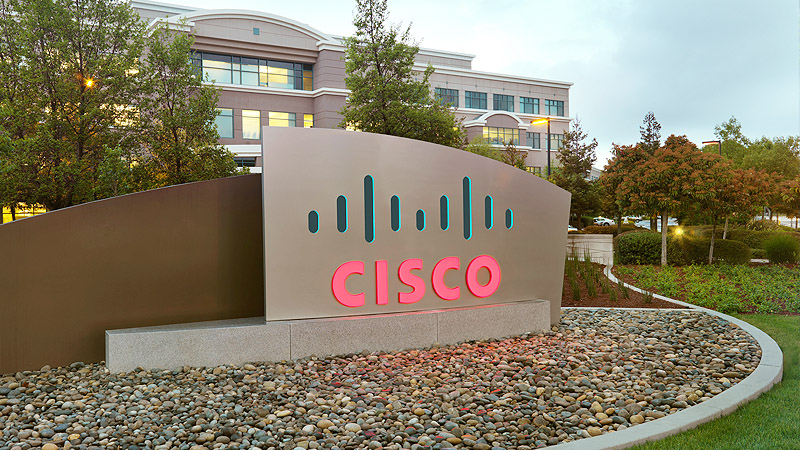Sao Paulo, Brazil, January 30, 2015 - The GRU Airport - Sao Paulo International Airport - has adopted Cisco® technology to integrate and update its technology and telecommunications infrastructure. Considered the main hub of Latin America, the GRU Airport has deployed Cisco wired and Wi-Fi networks in its newly opened Terminal 3. The objective was to assist with the needs of the increasing passengers flow for the next 20 years, driven also by the increased demand during large sports events occurring in Brazil, such as the 2014 FIFA World Cup and the 2016 Olympic Games.
Cisco technology enabled the automation of various airlines systems, and potential extra revenue opportunities. Cisco Switches and more than 500 Cisco Access Points were deployed throughout the airport site, providing a Wi-Fi network for passengers and customers, and coverage throughout the corporate environment area.
Terminal 3 now operates with a redundant architecture, shared as a service for the airline companies. Network stability and performance, with final speed increased by at least 10 times, were essential to the implementation of a dynamic check-in, speeding up seats relocation on flights, and reducing airport and companies’ costs.
Offering flights to over 100 destinations (including 56 international), Sao Paulo International Airport is the main and busiest in the country, handling about 830 takeoffs and landings daily, and 108,000 passengers on average. The Airport networks were already struggling to meet this demand, experiencing security constraints and control and management issues in general, even before the increased passenger flow due to the 2014 sport event.
The GRU Airport thus sought a solution to integrate the various automation technologies and complex flight control systems and reservations. In addition, the new infrastructure should provide scalability and robustness to avoid unavailability of vital services to the airport.
Cisco offered an integrated solution to address the airport needs, consistently with the planned investment forecast. Besides the financial aspect, Cisco technology was also chosen due to key features such as Multicast/Broadcast, VPLS (Virtual Private LAN Service) and VSS (Virtualization Switching System) which combines multiple Cisco® Catalyst® switches into a single virtual switch.
By increasing non-scalable communication, the Cisco solution expanded the system bandwidth to 1.4 Tbps, delivering 1 Gbps, with quality and safety for customers in two or more points at the Airport. In practice, this means that Cisco infrastructure is robust enough to support up to 40 GB of traffic, from about 1,800 network users (using approximately 14,000 access ports), and the internal CFTV traffic, with over 1,000 cameras throughout the airport site.
Medidata, a Cisco partner and integrator, was responsible for the implementation of Cisco architecture at the GRU Airport. The company produced both the high-level design, including equipment and features, and the low-level design, which includes all commands and setting list. The implementation lasted about eight months, with the completion of the network backbone in September 2013, and the new Terminal 3, in May 2014.
Wi-Fi and additional revenue opportunities
After the FIFA World Cup, in 2014, new technology opportunities emerged - especially for Wi-Fi technology. Cisco wireless architecture deployed at the airport offers not only connectivity but also intelligence, with applications such as Cisco CMX (Connected Mobile Experiences), which provides correlated data analysis of Wi-Fi users and their real-time location analytics.
Cisco CMX technology can provide data such as whether users are visiting the airport for the first time, if they are frequent flyers, and which device they are accessing the network from, besides informing higher or lower passengers flow in different areas of the airport. With this information provided by the GRU Airport as a service, retailers and airlines are able to create advertisements directed to a particular user profile, bringing additional revenue to the dealer and making Wi-Fi connectivity a more profitable business.
Expansion and long-term planning
The potential extra revenue opportunities brought to Sao Paulo International Airport by the new IT infrastructure are not restricted to indoor Wi-Fi only. By expanding the Terminal 3 Cisco networks to the parking building areas, to customs, and cargo terminals, the Airport will be able to explore W-Fi connectivity opportunities in further areas. The M2M systems automation, and import and export, may pave the way to the "Internet of Everything" (increasing networked connection among things, processes, people and data) at the airport.
GRU Airport already has plans to expand the network to Terminals 1 and 2. The plan also considered the architecture’s conformance and further development in the long run. With regard to the network topology, the solution was designed and configured to assist with the airport demands for the next 20 years.
Supporting Quotes:
Luiz Eduardo Ritzmann, Information Technology Director, GRU Airport
"The new IT infrastructure in Terminal 3 and its subsequent expansion to Terminals 1 and 2 are intended to optimize and integrate the various systems at Guarulhos International Airport, reducing costs and converting technology into benefits to users, and improved services. This is another step toward our goal of making GRU one of the 20 reference airports worldwide”.
Carlos Rives, President, Medidata Group Amper
"We are proud of being part of this remarkable project together with Cisco, waving a Brazilian flag in terms of technological innovation in infrastructure. It is a radical change in customer services in one of the first ports of the country, Guarulhos International Airport. This brings GRU Airport to world-class category and we are delighted to be part of it."
Eduardo Almeida, Public Sector Director, Cisco Brazil
"Cisco has a huge technological blueprint in transformation processes at various airports in the world. By providing operational efficiency and cost reduction, as well as connectivity and intelligence, technology can boost productivity and profitability of airports and airlines, as we approach the era of 'Internet of Everything'.“
About GRU Airport
On February 6, 2012, the consortium Invepar-ACSA, composed by private companies Invepar (Investimentos e Participações SA Infrastructure), an Investments Funds Society and ACSA (Airports Company South Africa) was announced as the concession auction winner for Guarulhos International Airport, the largest airport in Brazil, handling over 36 million passengers in 2013. The signed deal granted the Invepar-ACSA group dealership of Guarulhos International Airport SA, with 51% of shares and Infraero, the state-run organization, with 49%. Out of the 51% of the private enterprise shares, Invepar holds 90% stake and ACSA, 10%.
About Cisco
Cisco (NASDAQ: CSCO) is the worldwide leader in IT that helps companies seize the opportunities of tomorrow by proving that amazing things can happen when you connect the previously unconnected. For ongoing news, please go to http://thenetwork.cisco.com.
###
Cisco and the Cisco logo are trademarks or registered trademarks of Cisco and/or its affiliates in the U.S. and other countries. A listing of Cisco's trademarks can be found at www.cisco.com/go/trademarks. Third-party trademarks mentioned are the property of their respective owners. The use of the word partner does not imply a partnership relationship between Cisco and any other company.



